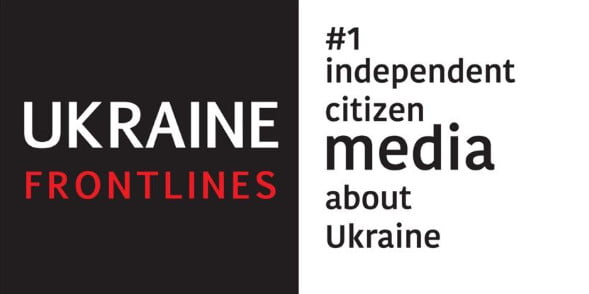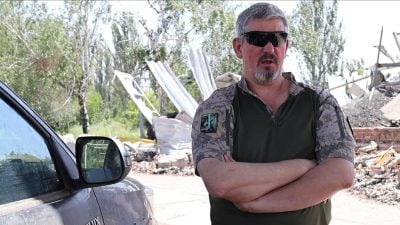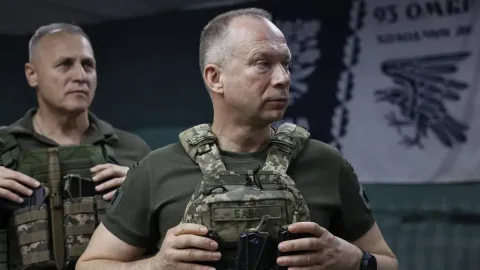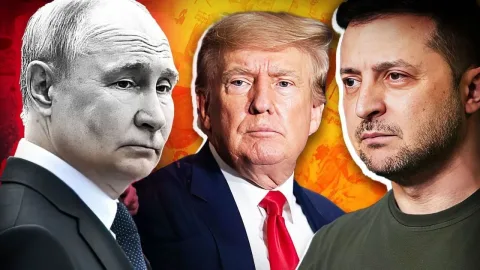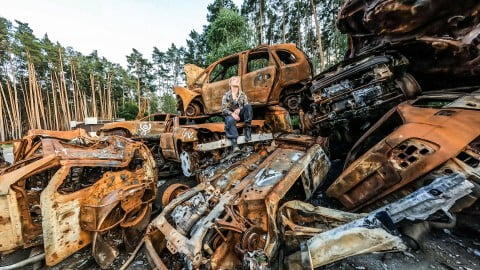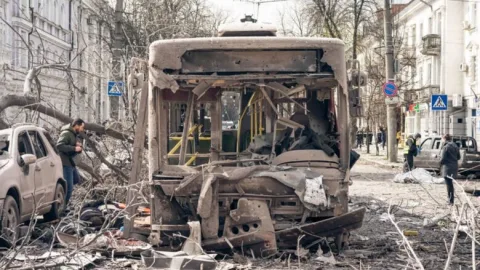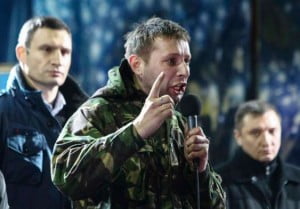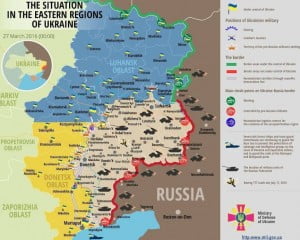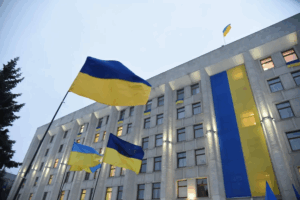Artillery intelligence officer Arty Green declares that precision-guided munitions are an argument against which the Russian army has no answer.
Artillery intelligence officer in the Eastern direction, military expert Arty Green told in an interview with UNIAN the following: how effective Western artillery systems are, whether the Ukrainian Defense Forces have enough shells, the threat of Russian “Lancets” and how artillery duels now look like.
About 95% of casualties in this war are artillery losses. Even in assault operations, the bulk of losses are caused by mine and shell fragments affecting the attacking units. On how the artillery war is going, UNIAN talked to Arty Green, an artillery intelligence officer in the Eastern direction.
Western analysts say that now Ukrainian artillery has become much more accurate and massively destroys the enemy’s artillery while the enemy cannot respond in the same way. How much does this correspond to reality?
Most likely, it is true. This is evidenced by the proportion of losses. Despite the fact that we are conducting attacking actions, the proportion of losses, including equipment, is significantly in our favor. That is, we are better at reconnaissance of targets and we have effective means of defeat – both precision and conventional. The statistics speak for themselves, there are not only calculations made by the General Staff and Konashenkov. Independent Oryx shows that our work is more effective. First of all, due to the fact that we have better control over the battlefield and the immediate rear.
What are the advantages of Western artillery?
Western artillery is more long-range. That is, a single artillery piece has a greater radius: both on the flanks, unlike Soviet artillery, and in depth. Therefore, there are at least a few means of defeat that reach targets detected at a fairly great depth.
Of course, whoever controls the artillery fire chooses the most effective methods of defeat and carries out that defeat. Accuracy? It’s hard to say. But the range is absolutely certain. Plus – the nomenclature of ammunition. High-precision ammunition is an argument to which the Russian army has no answer.
How can you qualitatively assess Western artillery?
They utilize a more advanced fire control system that allows you to speed up the time between detecting a target and hitting it. I’ll tell you something about quality. I once worked with two different divisions. One fired like a sewing machine, the other one couldn’t hit the field, shot with a big spread. And I asked the division commander who couldn’t hit: “What happened? You have ‘sevens’ and they have ‘sevens’, but you can’t hit…”. In response, he started saying something about Canadian guns being “worse” than American ones, well, and other “bullshit”. Actually, we do have units that are very effective. You just look at them and admire how they work. And there are others that still have a lot of work to do. Although they have become better during this year and a half of war.
I will tell you this about Western equipment: a Western manufacturer may or may not be lucky. If his equipment falls into good hands, it will show good results. If in bad hands, it will turn out to be the worst equipment in the AFU. In conditions of intensive work of “Lancets” on the nearest rear areas, it is more difficult to destroy M777 than “Panzerhaubitze”, because it is easier to hide it. The probability of finding a Panzerhaubitze and an M777 in the same area is significantly in favor of the “Sevens.” If I were given a choice now under these conditions and in this theater of war, I would choose the M777.
To what extent did the full-scale invasion qualitatively change Ukrainian artillery?
By 2013, the AFU had practically lost all its qualifications, especially in the field of artillery. Artillery reconnaissance was destroyed as a class. The level of the best artillery officers was below the average in the Soviet army. Since 2014, gradually this all began to be restored. Artillery reconnaissance units appeared. The fire control system began to improve. And in 2022, a large number of specialists who realized themselves in the “civilian” joined the army. And they applied their knowledge of management and IT in the AFU. And now we probably have the world’s most innovative systems for monitoring the battlefield, the closest enemy rear areas, and fire control systems.
They may not be polished to the level of the final product, but there is a creative process going on, with different units coming up with something new and then sharing their experience. During this year and a half we have made a giant step, first of all, in artillery fire control. It doesn’t take much intelligence to shove a shell in and pull the string: two weeks of training and the calculation works normally. But the fire control system – there is a lot of work to be done here. And we have already made a giant step forward.
Are Ukrainian artillerymen easily trained to master Western systems?
The main discipline or body of knowledge to be possessed relates to fire control. An artilleryman who has worked with the Soviet system can master a Western system, such as the Panzerhaubitze in just a couple of weeks. But fire control… During this war there have already been several, let’s say, “updates” of this system. The way fire control is done now is quite different from what it was a year and a half ago. And all the time this area is improving. I think the enemy is very far behind in this.
We have a very big advantage – during this war, a large number of people with a wide range of knowledge, including in the field of IT, joined the army. Even though they are usually privates or sergeants, they have allowed the AFU to make such a leap forward in the area of fire control that we have made a real qualitative step forward. In some areas, I am sure that we are ahead of NATO systems. The work with intelligence is more effective. Intelligence means themselves – our “zoo” of unmanned reconnaissance means is like no other in the world. Plus the world helps us with its systems. This data must be systematized in order for the commander to make the right decisions – what to hit and what target to choose. We are detecting and engaging the enemy more. And the time from detection to defeat is now minimal, and it is hard to imagine a lower time.
Do you often have to engage in artillery duels?
Artillery duels are a bit of a thing of the past. The classic artillery duel is where you see the enemy and the enemy sees you, and whoever strikes faster and more accurately wins. Now, at least in this campaign, I don’t remember such episodes. In 2014-2015 there were many such episodes, and now – working at long distances with high-precision weapons. If the enemy’s artillery is detected, we find the means with which to hit it not at the moment when it is firing, but at the moment when we have detected it and launched a preventive strike, disabling the system.
Can we say that since the beginning of the counter-offensive, the Ukrainian army has suppressed the enemy’s artillery points to such an extent that the occupants have started firing less in our direction?
The fact that they have started firing less is, rather, the work on logistical nodes. Our HIMARS, Shtormshadow, unmanned aviation of operational-tactical level are working. Warehouses are being knocked out. And I believe that, primarily because of this, there are supply gaps and the intensity of enemy fire is significantly reduced in certain areas.
What are your targets right now, who do you mainly shoot at?
The whole range of targets. If we are talking about my unit, we have some with a fairly large radius of the system, and some with a smaller radius. This is work on the front edge of the enemy – knocking out infantry. And work a little deeper – where their supply vehicles run – MT-LBs, BMPs. Well, and in depth, where their artillery and warehouses nearest to the front line are located. Everything we detect, we destroy almost immediately.
Are there now reliable ways to protect artillery positions from enemy drone strikes?
The best way to protect yourself is through camouflage. If you are not detected by the enemy, you will not be hit. There are no universal means. Some units have more equipment losses, and some have less, despite the fact that they stand in the same kill zone. Some are more effective in camouflage, some are not. We have different units – some are more effective, some less so, but we have not yet invented a pill against the Lancets. They’re flying, they could be here right now. But we’re unlikely to attract attention, they’re looking for big equipment. True, if they don’t find it, they’ll pick any SUV or just two people standing somewhere…
Do you feel that we and the enemy are short of shells?
If we had a shortage of shells, we would not be on the offensive. We have enough of them to effectively destroy the enemy at the rate at which it is happening now. Another issue is that, of course, there are distortions in the nomenclature. Obviously, we have significantly fewer mortar mines than we need. And this “significantly” is measured in tens of times: there are 10 times fewer of them than there should be. But what is available – I mean the entire nomenclature, from HIMARS to the same mines – is enough to effectively defeat the enemy. And this defeat will inevitably lead to the medium or even short-term prospect of cracking the front and advancing to some significant distances. The liberation of most of our temporarily occupied territories is possible.
Tags: military aid russia ukraine war